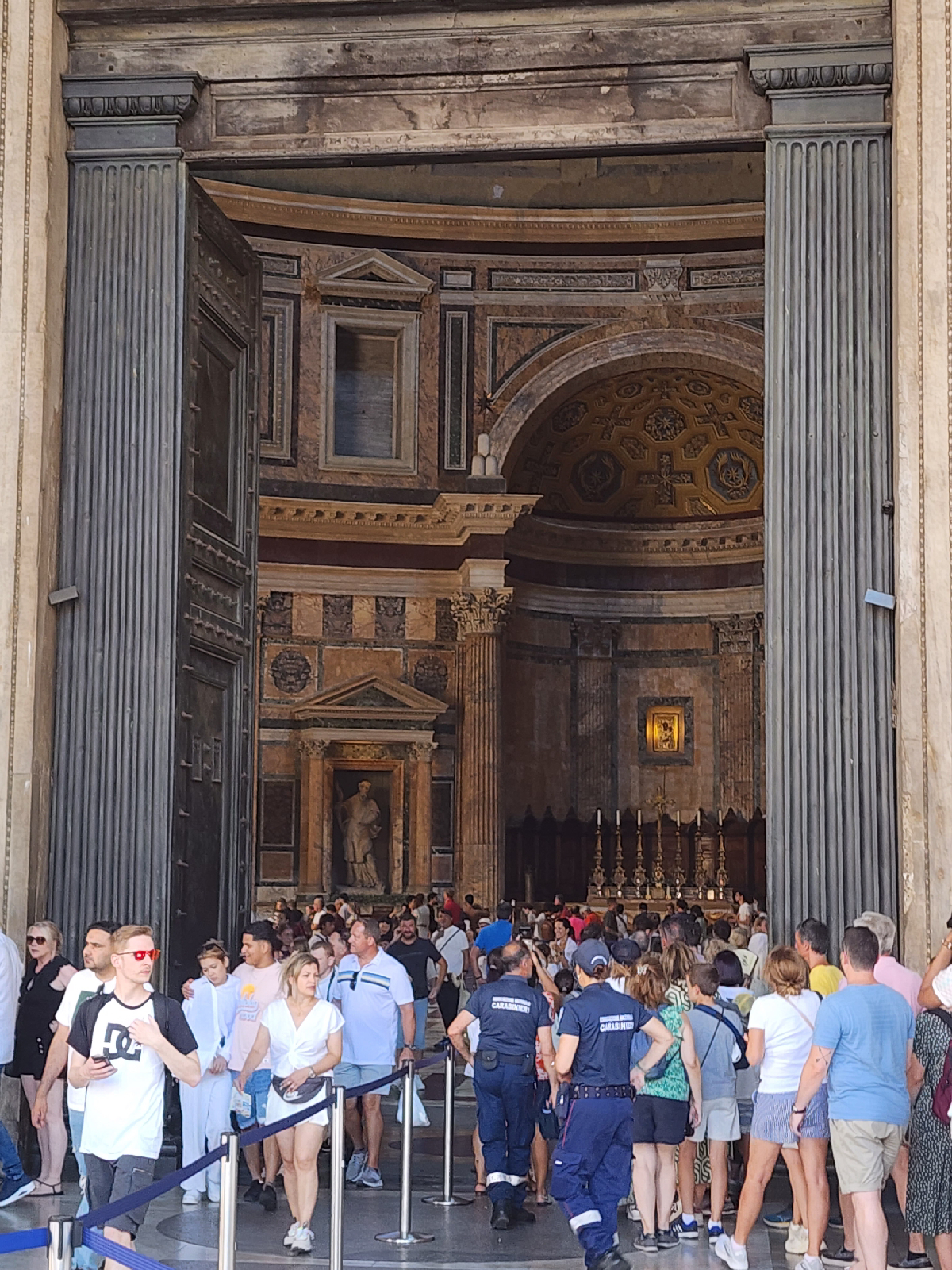By Shawn Bausch
The Pantheon is one of Rome's oldest standing structures in a city of ancient structures. Compounding its mysteries, experts are not certain what the Pantheon's original purpose was.
We picked up our tour in front of the Pantheon in the Piazza della Rotonda, one of Rome's smaller squares with a decorative fountain as well as one of Rome's drinking fountains fed by one of the city's ancient aqueducts still in use today. Our guide was an American from Philadelphia and a big highlight of our tour. A knowledgeable - and in this case, very entertaining guide will make your tour many times more enjoyable.
The current Pantheon is the third version of the original structure. First constructed in about AD 31 by the Roman general Agrippa coinciding with Augustus' significant victory over Marc Antony at Actium. Destroyed by fire in the reign of Domitian, it was rebuilt, then destroyed a second time by lightening, the current structure was rebuilt by Hadrian. Eschewing the opportunity to aggrandize himself, Hadrian rebuilt the temple between 113 and 125 C.E. with its original inscription marking it as Agrippa's creation.
The most striking aspect of the Pantheon is its size: sheer grandeur. The outer collonade at the entrance is populated by over 24 12 metre high columns, each of which are single blocks of Egyptian granite, transported from Egypt and raised with the technology of ropes, animals, boats, and slaves. Its bronze doors, over 7.5 metres high, are the largest in Rome.
Upon entering the building your gaze flies over the walls of the dome, an exact partial 43m diameter sphere, then upward to the "oculus" or nine-metre circular opening at the apex of the dome. The oculus itself is 22 metres above the floor. As we were to learn, the oculus gives the building many of its mysterious qualities, including the ability to provide ample natural light for the entire structure without windows, mark the date and time of day by noting the circle of light beamed on to the inside wall, the ability to cool and ventilate the interior, and to control rainwater which was subsequently run off through imperceptible drains in the marble floor.
Unfortunately, many items gilding the Pantheon have been removed over the centuries, including marble from the exterior and bronze from the interior. The floor of the Pantheon is entirely original, and striking in its quality after 2,000 years of carrying visitors. The floor is decorated in different shapes and colours of marble, with a generous amount of porphyry, the most precious construction stone of the ancient world.
The Pantheon is standard study of first-year architects worldwide because its construction over 2,000 ago achieved its free-standing height, still the world's largest concrete dome not requiring reinforcement. It has been the inspiration of many other world-famous structures such as Brunelleschi's dome of Florence's cathedral and Jefferson's rotunda at the University of Virginia, among many others worldwide.
Unknown if it was used to venerate multiple deities, as Roman Law actually forbade places of worship being dedicated to multiple Gods for fear of arousing jealousies, its name may have come from its heavenly ability. The original structure had bronze stars attached at points on its walls and suspensions for candles. When the candles were lit, the bronze stars reflected the light back to the centre of the sphere in a seeming suspension, giving the illusion of stars filling the sphere and the dome becoming like the night sky.
The building has been in almost continuous use throughout its existence. Originally thought to have been populated by statues of venerated pagan figures, It was consecrated as a church in the 7th century. The Pantheon now has three niches. One at the back wall hosting an altar, commission by Clement the XI, and others hosting tombs. Victor Emmanuel II, Italy's first modern king, his son Umberto I and his son's wife, Queen Margherita. And through fame and talent, the Renaissance artist Raphael is also buried here.
An absolute marvel. Experience it with someone who knows its history well and others willing to take your photo to mark the occasion.



Comments
Post a Comment